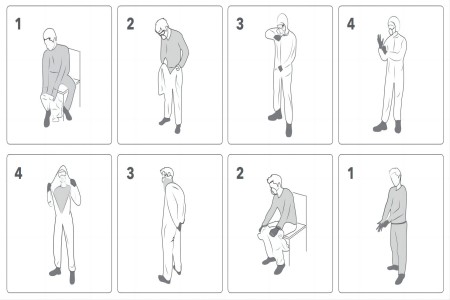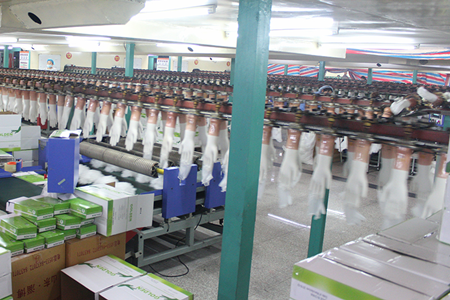2023/9/21

Mastering Safety: A Step-by-Step Guide to Donning and Doffing Disposable Coveralls
Disposable coveralls are a critical line of defense in a multitude of industries, from healthcare and pharmaceuticals to construction and hazardous material handling. They provide full-body protection against a range of hazards, including chemical splashes, biological agents, and fine particulates. However, the protection they offer is only as effective as the procedure used to put them on and, just as importantly, take them off. Improper handling can lead to cross-contamination and exposure, nullifying the very purpose of the protective garment.
This article provides a comprehensive guide to the correct procedures for donning (putting on) and doffing (taking off) disposable coveralls to ensure maximum safety.
Before You Begin: Essential Preparations
Before even unfolding the coverall, a few preparatory steps are crucial to ensure a secure and safe fit.
Inspect the Garment: Carefully examine the coverall for any defects such as tears, holes, or malfunctioning zippers. If any damage is found, the coverall should be discarded as its protective capabilities may be compromised.
Choose the Right Size: Selecting a coverall that fits properly is paramount. A suit that is too tight can restrict movement and may tear, while one that is too loose can be a tripping hazard and get caught on machinery. A well-fitting coverall allows for a full range of motion without being overly baggy.
Remove Personal Items: Take off any jewelry, watches, or other accessories that could potentially tear the fabric of the coverall.
Prepare Your Base Layer: It's advisable to tuck your trousers into your socks to create a smoother surface and prevent any gaps where contaminants could enter.
Gather All Personal Protective Equipment (PPE): Ensure that any other required PPE, such as respirators, safety goggles, gloves, and boots, are readily available.
Donning Your Disposable Coverall: A Step-by-Step Process
Following a systematic approach when putting on your coverall will help to ensure a complete and secure barrier. It is often beneficial to sit on a chair during the initial steps to maintain balance.
Take off your shoes or boots: While seated, take off your shoes or boots first.
Step into the Legs: Then carefully slide your feet into the leg sections of the coverall, one at a time.
Put on Footwear: Once your legs are in the coverall, put on your safety boots or shoes. Pull the coverall legs over the top of your footwear.
Pull Up to Your Waist: Stand up and pull the coverall up to your waist.
Insert Your Arms: Slide your arms into the sleeves one by one. Ensure the sleeves cover your entire arm and the cuffs fit snugly.
Don Other Necessary PPE: If you are using a respirator or safety goggles, now is the time to put them on and ensure they have a proper seal.
Position the Hood: Pull the hood over your head, making sure it covers all of your hair and fits snugly around your face. The hood should not obstruct the seal of your respirator or goggles.
Zip Up Completely: Fasten the zipper all the way to your chin to ensure there are no gaps. If the coverall has a protective flap over the zipper, press it firmly into place.
Put on Gloves: The final step is to put on your gloves. The cuffs of the gloves should be pulled over the cuffs of the coverall sleeves to create a secure seal. Some protocols may suggest wearing an inner pair of gloves as well.
Doffing Your Disposable Coverall: The Critical Removal Process
The removal process is arguably the most critical step, as this is when the risk of cross-contamination is highest. The guiding principle is to touch only the inside of the coverall with your bare hands and to roll the contaminated exterior inward. This procedure should be performed in a designated, clean area away from the main work zone.
Prepare for Removal: If you are wearing outer gloves, they should be disinfected if possible. If the zipper has an adhesive flap, have a colleague assist in opening it if necessary.
Unzip the Coverall: Carefully unzip the coverall completely, being mindful not to touch your inner clothing.
Remove the Hood: Peel the hood back and away from your head, allowing it to fall behind your shoulders. Avoid letting the outer surface of the hood touch your head or neck.
Peel Down from the Shoulders: Begin to roll the coverall down from your shoulders and arms, turning it inside out as you go. Use your hands behind your back to pull down one sleeve, then the other.
Remove Gloves as You Remove Sleeves: As you pull your arms out of the sleeves, you can simultaneously remove your gloves, trapping them within the rolled-up coverall. One technique is to remove the first glove and sleeve, and then use your clean hand inside the coverall to push off the second sleeve and glove together.
Roll Down to the Waist: Continue to roll the coverall down your torso to your waist, always keeping the contaminated side rolled inward.
Sit and Remove from Legs: Sit down to make the final steps easier and safer. Continue to roll the coverall down your legs. As you do, remove your boots, stepping out of the coverall and onto a clean surface.
Proper Disposal: The coverall, now a bundle with the contaminated side contained, should be immediately placed in a designated biohazardous waste bin or other appropriate container for disposal according to local regulations.
Remove Remaining PPE: If you were wearing a respirator or goggles, remove them by handling the straps, avoiding contact with the front surfaces. Remove any inner gloves last, turning them inside out as you take them off.
Thorough Hand Hygiene: The final and most crucial step is to wash your hands thoroughly with soap and water or use an alcohol-based hand sanitizer, even if you wore gloves.
By diligently following these procedures for donning and doffing, workers can significantly reduce the risk of exposure to hazardous materials and ensure their disposable coveralls provide the intended level of protection. Safety is not just about wearing the right equipment, but also about using it correctly from start to finish.




 WhatsApp
WhatsApp
Send us your message
You can send an email asking for the price and detailed information of this product. We will reply you as soon as we receive your email